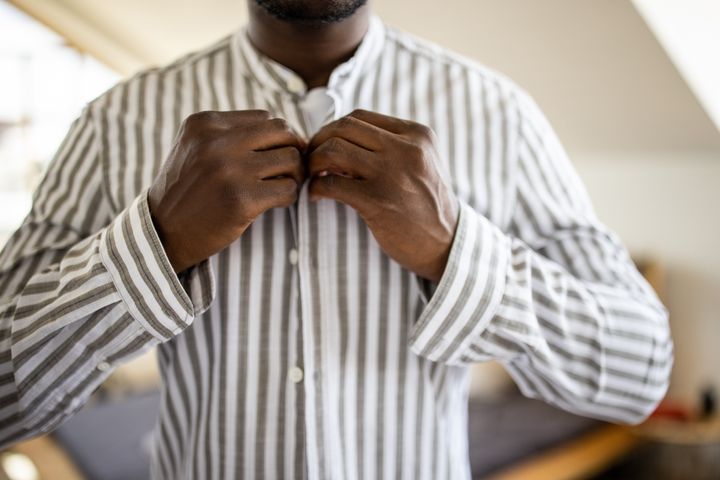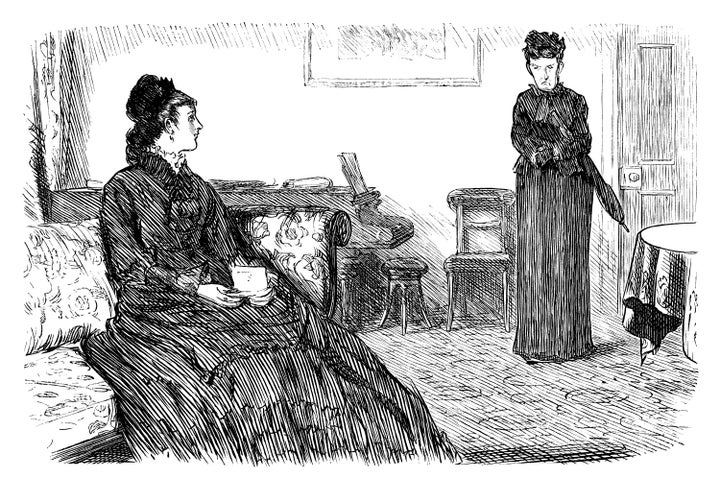
Have you ever worn a button-up shirt meant for another gender, and wondered why your fingers struggled with the buttons? It’s because men’s and women’s shirts are buttoned on opposite sides. But why?
Since time immemorial, men’s shirt buttons are sewn onto the right side of the shirt’s placket, while women’s buttons are on the left.
Interestingly enough, despite the fact that buttons have remained unchanged for what amounts to centuries, there isn’t a single officially documented reason why each gender has its own button orientation. But experts in fashion history may have narrowed down the answer.
Buttons as a sign of affluence
According to the Encyclopedia Brittanica, buttonholes were invented in the 13th century and, by the 14th century, indirectly relayed the societal status of the wearer.
“The wearing of gold, silver and ivory buttons was an indication of wealth and rank,” the publication cites.
According to Natalie Hicks, a designer at apparel manufacturer company Our Visn, “As a style and design element, as opposed to function, buttons were reserved for wealthy women who wanted to embellish their luxurious textiles with [items] made of pearls and precious stones,” while others opted for “apron-like tunics” or “sapless chemises” that could just be slid on as opposed to be buttoned up.
What what’s to account for the difference between which side of the garment the button is fastened? The experts we spoke with theorise that it’s likely related to a person’s social standing, specifically when it comes to women.
“Back in the day, dressing up was a big deal, especially if you were wealthy,” explained Scott Liebenberg, the CEO of Tapered Menswear. “Ladies often had maids to help them dress, so having buttons on the left made it easier for a right-handed helper.”
Men, on the other hand, mostly dressed themselves, said Liebenberg, and having the buttons on the right made it generally easier to do so.
Hicks agrees with this theory: “Noble women wore heavy textiles and gowns could have up to six layers, so they would have a servant or attendant assisting them into their multilayered garment of petticoats, bustles, a corset and other undergarments,” she explained. “Buttons were therefore installed in the opposite direction of what was standard for men’s clothing as the attendant would stand in front of her mistress and quickly dress or undress her.”

To put it simply, owning clothes with buttons, at least when they were first invented, was a sign of wealth. For women in specific, that wealth also accounted for the ability to hire servants who could help them get dressed each morning.
As a result, many button-featuring garments were constructed with the studs on the left side of the garment, so that the (mostly) right-handed maids could more easily open and button up the clothes.
Why haven’t things changed since the 14th century?
Today, the presence of buttons on any piece of clothing doesn’t lead to any assumptions about the wearer’s potential affluence (the type of material used to create the button, on the other hand, might still lead to similar conversations, but that’s a topic for another time).
Given commercialisation and the relative ease involved in producing the object, in fact, buttons are just about everywhere in 2024.
What are less common, if not downright absent, though, are the sort of handmaidens that clothing designers were taking into account when designing garments in the past. Why, then, are buttons still lined up differently for men and women?
“In the 19th century buttons were incorporated more in everyday women’s clothing due to advances in sewing technology,” Hicks explained. “The difference in placement between menswear and womenswear is essentially a holdover from the 13th century that has never been corrected. Designers are creating new looks [based] on old patterns.”
The idea that the past informs the present despite the lack of functional needs resonates with Liebenberg, as well. “There’s no concrete evidence as to why [this is still the case],” he said, before theorising that fashion’s reliance on tradition might be one of the culprits.
“Once a particular style or feature becomes standardised, it tends to continue,” he noted. “Although style evolves, the general patterns remain the same.”
According to Liebenberg, manufacturing standards may also be at fault. “I’m sure there are other ways to tell the difference [men’s and women’s garments] but when the shirt placket is attached separately on the garment, it may be easier for the assembly line to understand what kind of shirt it is,” he said. “It could just be about streamlining operations up until the modern day.”
Whatever the reason may be, there’s one thing fashion experts agree on: the position of the buttons doesn’t seem to influence the way people decide to dress.
“I don’t think most people know that button direction is an indicator of gendered clothing,” Hicks said. “Yes, it may be weird buttoning a shirt in the opposite direction of what you’re used to, but I think most people just chalk it up to a decision made by the designer.”
Although Liebenberg agrees (“most of us don’t wake up thinking about which side our shirt buttons on,” he noted), he’d like to go a step further, specifically proving how fashion trends may want to evolve with time.
“I think it’s important to question traditions,” he said. “Why not mix it up and make clothes that feel right for everyone, regardless of which hand they use to button up in the morning?”